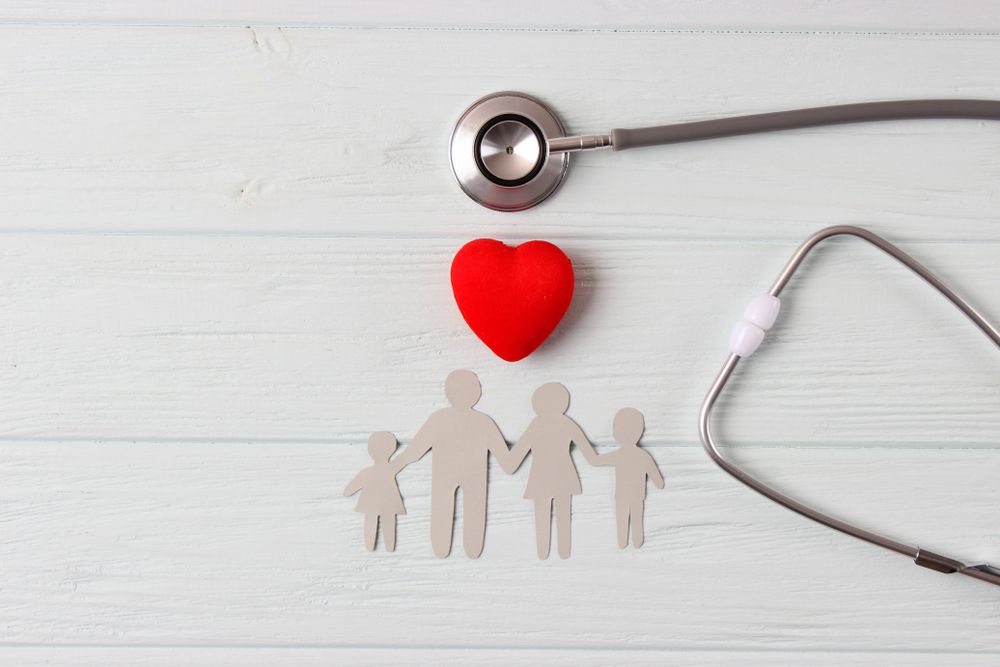Telepsychiatry is the use of smartphones and computers to conduct mental health evaluations, consultations, and therapy over long distances. (Learn More) Research has found that telepsychiatry increases access to mental health services for people who might not otherwise be seen by a therapist. (Learn More)
Telepsychiatry is as effective as in-person treatment, and it may even be more beneficial for patients who have certain mental health conditions. (Learn More) Hospitals that do not have access to on-call psychiatrists to help patients experiencing a mental health emergency can use a telepsychiatry system to support medical staff, leading to a greater depth of integrated care. (Learn more)
What Is Telepsychiatry?
The American Psychiatric Association explains that telepsychiatry is a form of telemedicine. Telemedicine itself is the practice of using internet-enabled devices, like smartphones, laptops, and computers, to provide health care over a long distance. An example is using videoconferencing or apps to help a doctor communicate with a patient in a remote area.
Telepsychiatry is a subset of telemedicine. Among other functions, it can assist in the provision of a number of different services, such as psychiatric evaluations, therapy (individual, family, or group therapy), patient education, and medication tracking and management.
Telepsychiatry can do this by creating a direct interaction between the psychiatrist and the patient. It can also cover psychiatrists supporting primary care providers with consultations for mental health care, providing their expertise as required.
Telepsychiatry creates a way that mental health care can be delivered in a real-time, interactive way for patients who live far away from their doctors or who cannot be physically present with their doctors when treatment is necessary. In addition to face-to-face conversations, patients can take images or video and send them instantly and securely, across vast distances, for their therapist to review and respond to.
Removing Barriers to Treatment
How can telepsychiatry help patients? The use of videoconferencing can address patients’ needs for convenience, affordability, and accessibility. For example, telepsychiatry can improve access to mental health specialty care in places where it is not readily available. In 2018, for example, the American Journal of Preventive Medicine found a severe shortage of mental health professionals in rural areas. Telepsychiatry can bring this kind of care to patients’ exact locations, such that patients can have consultations and therapy sessions from their own bedrooms.
Telepsychiatry can also integrate behavioral care with primary care, which the International Review of Psychiatry stated will lead to better treatment outcomes.
The accessibility and convenience mean that patients will not have to make as many trips to the emergency room, and they will have to endure fewer delays in their care. There is a reduced need to take time off work or secure childcare services to access health care that would otherwise be prohibitively far away. Patients who are ashamed or embarrassed for having to seek psychiatric help can still talk to their therapist from their own bedrooms.
Effectively, telepsychiatry negates many of the barriers to treatment that stops people from accessing the mental health care they need.
From the practitioner side, telepsychiatry makes it easier for doctors and specialists to improve their continuity of care.
Comfort and Range of Treatment
Talking to a person on a screen can feel awkward, but the experience can also help people feel more relaxed and more willing to open up about their problems, especially if they can do so from a place of their choosing as opposed to a doctor’s office.
As communication and entertainment delivered via smartphone becomes more ubiquitous, adapting the medium for health care purposes becomes increasingly familiar and even comfortable. It is true that telepsychiatry naturally entails that the patient and the psychiatrist cannot be in the same room together, but the medium can nonetheless create feelings of privacy, security, and safety for many patients.
Telepsychiatry gives practitioners the ability to treat a greater number of patients in more locations. It is necessary for psychiatrists and similar clinicians to have appropriate licensing in the state where the patient with whom they are working is located. The location of the patient is where the practice of medicine occurs in the eyes of state licensing boards and legislatures. As long as the psychiatrist receives the necessary licensing, they can be anywhere in the country. Busting one of the myths about telepsychiatry, Innovations in Clinical Neuroscience wrote that state boards are often “extremely responsive to telemedicine providers’ inquiries regarding licensure requirements.”
Does Telepsychiatry Work?
There are a lot of benefits to telepsychiatry, but does it actually work? The American Psychiatric Association points to “substantial evidence of the effectiveness of telepsychiatry,” quoting research that has found that patients and psychiatrists alike are very satisfied with the practice.
In terms of patient satisfaction, quality of care, treatment effectiveness, and diagnostic accuracy, telepsychiatry has been found to be equivalent to in-person care. Furthermore, studies that have compared telepsychiatry to in-person care have found that patient privacy and confidentiality are equivalent across both methods. APA also stated that overall experiences across different age groups have been positive.
People who prefer telepsychiatry to in-person care (those with autism, for example, or those who have extreme anxiety disorders of physical limitations) might benefit the most. Additionally, patients who have post-traumatic stress disorder, depression, and attention deficit hyperactivity disorder will also likely find telepsychiatry to be exceptionally beneficial.
One of the biggest advantages of telemedicine is that it can be used almost anywhere, and this applies to telepsychiatry as well. With the right devices and telecommunications infrastructure, telepsychiatry can be practiced in private and outpatient clinics, hospitals, schools, nursing homes, and correctional and military facilities.
A patient can request an appointment, usually a live video call, with a psychiatrist or a therapist. This can be done with a regular provider if the provider offers telepsychiatry services. If not, there are many companies that offer access to mental health professionals via video appointments.
The American Psychiatric Association recommends that notwithstanding the ease and convenience of telepsychiatric sessions, patients should plan ahead and prepare themselves just as they would if they had an in-person appointment. This means having all paperwork handy, including relevant medical records and information like prescriptions, and a list of questions they would like their therapist to address during the session.
Emergency Rooms and Nursing Homes
Another significant benefit of telepsychiatry is that it is bringing timely mental health care to emergency rooms. The Agency for Healthcare Research and Quality reported in 2016 that at least one in every eight visits to a hospital involves a mental health and/or a substance abuse condition, but many emergency rooms do not have psychiatrists or other mental health professionals on staff to work with patients who present with serious mental health issues.
Also in 2016, the American College of Emergency Physicians noted that only 17 percent of emergency room physicians said their hospitals had a psychiatrist on call to respond to patients having an emergency.
Outside of emergency rooms, telepsychiatry is used in nursing homes to offer ongoing psychiatric evaluation and care, as well as emergency crisis treatment when a local psychiatrist cannot be found. The Permanente Journal writes that a number of states use telepsychiatry in correctional facilities, where inmates often require ongoing care.
How Telepsychiatry Changes the Game
In terms of insurance, at least 32 states have legislated that private insurance companies offer coverage for telemedicine, and Medicaid programs in 48 states will reimburse patients for some telepsychiatry services. One challenge posed by the rapid development of telemedicine is that not all the laws and policies regarding insurance and treatment have caught up to what the system can do, so the paperwork is in a constant state of elevation. However, because of the significant need for mental health services in rural areas, Medicare will reimburse patients for telepsychiatry services if their community meets the criteria for a rural region.
In January 2019, Forbes magazine wrote that “telepsychiatry is revolutionizing care” for the way it can bring down a number of barriers to treatment in a cost-effective way for both patients and practitioners. The fact that telepsychiatry offers treatment that is just as good as in-person work, and might be of increased benefit to patients who need the help but cannot otherwise access health care, sets it up to be “the game changer that psychiatry was waiting for.”
References
What Is Telepsychiatry? (January 2017). American Psychiatric Association.
Geographic Variation in the Supply of Selected Behavioral Health Providers. (June 2018). American Journal of Preventive Medicine.
Telepsychiatry Integration of Mental Health Services Into Rural Primary Care Settings. (2015). International Review of Psychiatry.
What Barriers Are Preventing Patients From Getting Mental Health Services? (October 2018). Medcity News.
Top 10 Myths About Telepsychiatry. (October 2017). Innovations in Clinical Neuroscience.
Telepsychiatry Improves Access to Mental Healthcare in Rural Areas, Study Finds. (May 2019). HIT Consultant.
A Randomized Trial of Telepsychiatry for Post-Traumatic Stress Disorder. (2007). Journal of Telemedicine and Telecare.
Depression Outcomes Among Primary Care Patients: A Randomized Trial. (June 2012). JAMA.
Telemedicine Effective for ADHD. (March 2015). Medscape.
Trends in Emergency Department Visits Involving Mental and Substance Use Disorders, 2006 – 2013. (December 2016). Agency for Healthcare Research and Quality.
Waits for Care and Hospital Beds Growing Dramatically for Psychiatric Emergency Patients. (October 2016). American College of Emergency Physicians.
Care in Underserved Populations. (Summer 2013). The Permanente Journal.
The Affordable Care Act and Insurance Coverage in Rural Areas. (May 2014). Kaiser Family Foundation.
How Is Telepsychiatry Revolutionizing Care? (January 2019). Forbes.
















